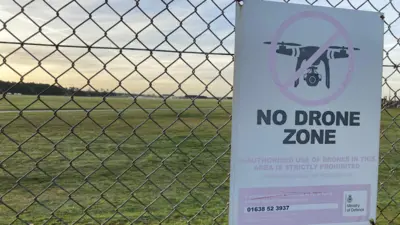We've updated our Privacy and Cookies Policy
We've made some important changes to our Privacy and Cookies Policy and we want you to know what this means for you and your data.
Curlew numbers 'fall by two thirds' in New Forest National Park
Image source, Andy Hay
Curlew numbers in one of the birds' strongholds in southern England have experienced a "shocking decline", conservationists have said.
Figures released by Wild New Forest (WNF) show a two-thirds decline in breeding pairs in the national park over the past 12 years.
In 2004, about 100 breeding pairs were identified, compared with 40 recorded by volunteers in 2016.
Runners or dogs disturbing ground nests may be affecting breeding, WNF said.
The curlew, with its long down-curved bill, is Europe's largest wading bird and it typically nests in open areas of heath and bog at ground level.
WNF said if the New Forest curlew population continued to decline at a similar rate the species could become extinct in southern England within two decades.
Nationally, curlews are already included in the most at risk red category of the latest .
The said observers had located 19 nests during 2016 and although chicks appeared to have hatched at nine nests, others were clearly abandoned or the eggs had been taken by predators.
'Startled by people'
Nigel Matthews, head of recreation management and learning at the New Forest National Park Authority, said the curlew population was a "barometer for the well-being of wildlife" in the New Forest.
"Disturbance is likely to be a cause of the decline, it's vital that we do all we can to reduce instances of birds being startled by people," he continued.
The UK is thought to have about 68,000 breeding pairs with numbers falling nationwide.
Top Stories
More to explore
Most read
Content is not available








